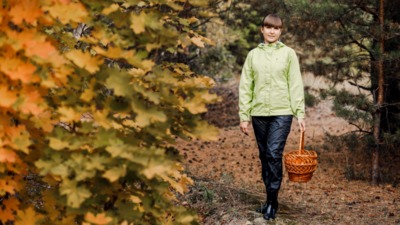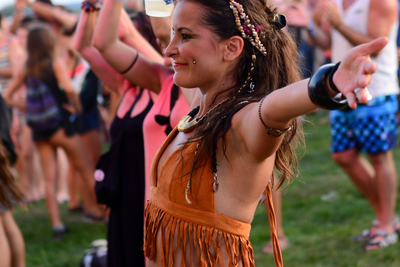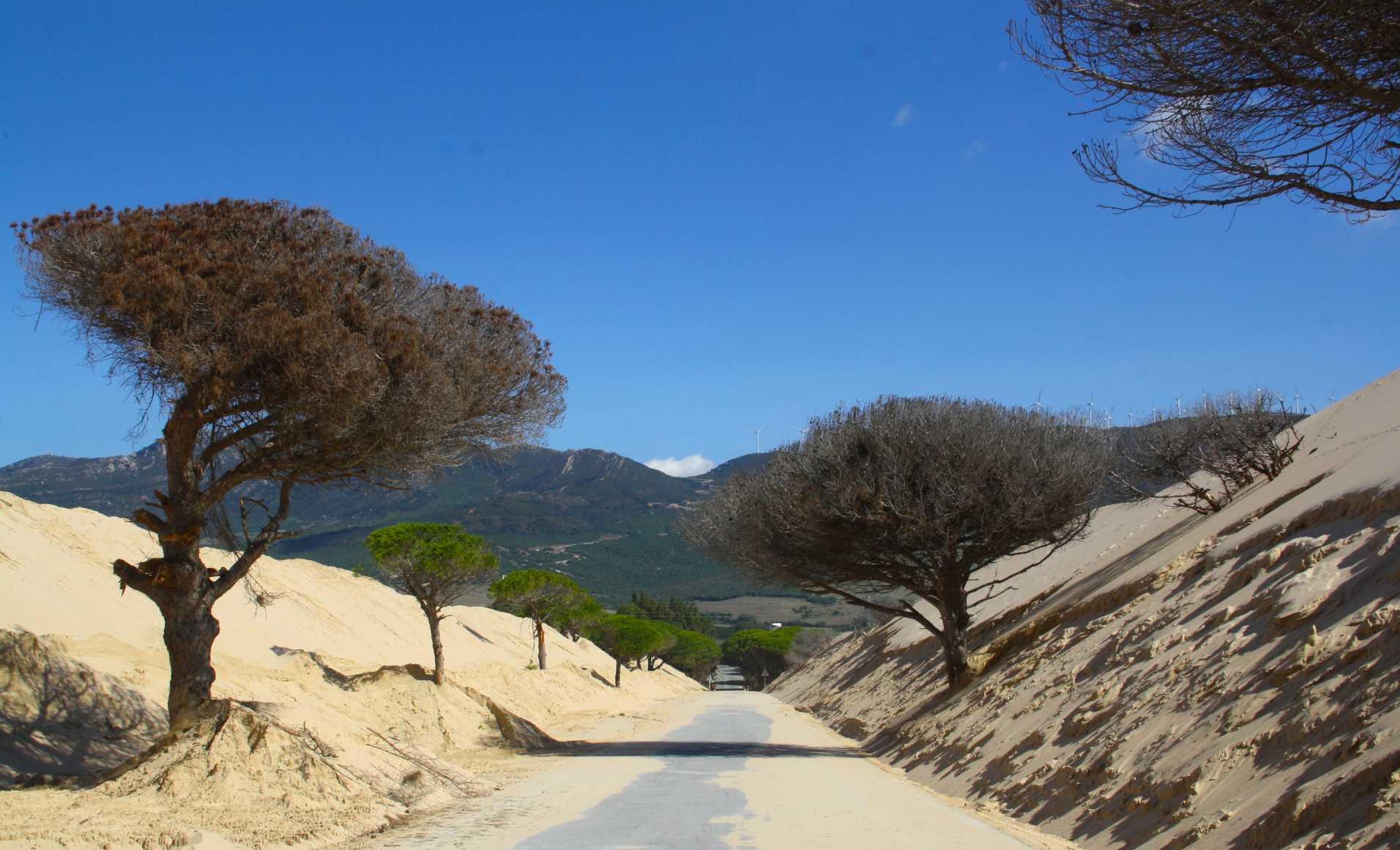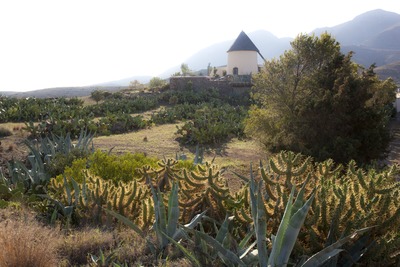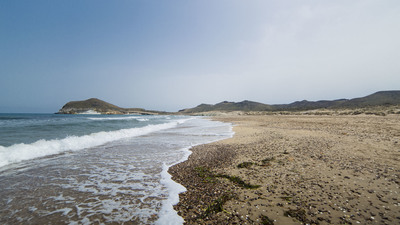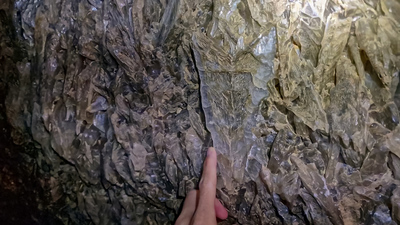Nijar countryside and coves of Cabo de Gata. Routes with Carmen de Burgos

Vitally feminist, a defender of women and equal rights in difficult times, she supported divorce and the vote for women.
Carmen de Burgos Seguí, "La Colombine”. (Rodalquilar, Almería, 1867–Madrid, 1932)
A woman ahead of her time
Carmen de Burgos, known by her pen name La Colombine, was a leading writer who worked as a journalist in Almería and Madrid. For some time, she worked as a teacher in the city of Almería.

She had a peaceful childhood, born into a bourgeois family in the mining village of Rodalquilar, in the Níjar-Cabo de Gata Natural Park. The dry and desert areas of the park were her companion as a child, where she discovered a virgin paradise in the coves of Cabo de Gata horizons of freedom. She learnt how hard the work was in the gold mines of her town and she was always close to the miners.
At the foot of the ancient walls of the Alcazaba of Almería, the largest and most complex Arab fortress of Al-Andalus, Carmen discovered the meaning of Moorish culture. From its impressive height, we can see the port of Almería with its mineral loading bay and its great importance for fishing. But it would be in her home town and in the coves and on the solitary beaches of Cabo de Gata and the countryside around Níjar where she would forge her rebellious spirit.

Europe's gold
Carmen de Burgos always remembered the years she lived in Rodalquilar, the mining village that —until the 1950s— kept open the most important gold mines in Europe as the time of her life when she discovered the value of friendship and secrets on long walks down to the lost coves of Las Negras, those of Rodalquilar or of Los Genoveses.
From those years in Rodalquilar, travellers can get an idea of what Carmen de Burgos's childhood was like. Some of the miners' houses, with their red brick, still remain and have been restored; particularly, a themed centre that is a museum about the gold mines and everything surrounding the mining. This town is worth an comprehensive tour, with the ruins and skeletons of the reddish walls of the miners' houses, built during the gold rush at the end of the 19th century.
Close by, films were shot such as Indiana Jones and The Last Crusade and it has a series of establishments that are ideal for leisure after a day at the beach or taking paths and trails to the town of Níjar, the capital city of the region.

Around the Níjar countryside
Cabo de Gata Natural Park was where Carmen grew up until she moved to Almería and later to Madrid. The writer used to go up to Níjar before greenhouse agriculture moved in and she always told of the impact that this town with its deep Moorish roots, famous for its artisans, had on her. There were lots of weavers there with their famous multicoloured rugs, and the craft of esparto grass and ceramics, which Gerald Brenan once said was of "unique Eastern design and manufacture”.
On the way, we come across the Cortijo del Fraile, where Federico García Lorca wove the drama of one of his plays written in blood. The walls of this farmhouse are bare and it is a skeleton of what it was, but it is well worth a visit to relive Blood Wedding. Carmen de Burgos, who knows the area herself, also recreated the crime of Níjar and, especially, the customs of this region. For the more adventurous, there are routes that take gentle hills to the gorges in the mountains surrounding the Tabernas desert, whose arid surface served as a natural set for filming famous films as if they were in the Grand Canyon.

From cove to cove

Salt flats and fish from the estuary or around the rocks
For those who love cuisine with a maritime flavour, what better than enjoying a red mullet, a squid, John Dory, some red prawns or a sole from the Cabo de Gata Salt Flats. And travellers can find other spots that remind them of La Colombine. Before reaching the impressive Cabo de Gata, on a breathtaking promontory, we have to stop at the Salt Flats, a nearby paradise for travellers where, besides the appeal of the enormous salt mountains, there are places for observing the wealth of birds and, at the nearby restaurants, having a sole from the estuary with its unique and intense taste of the sea. Going up to the top of Cabo de Gata is a must.
Carmen de Burgos is sure to have done so more than once, either on foot or on a mule in those days. It is on the Charidemo Promontory (Promontory of the Agates) as it was called by the Phoenicians —and which was Mountain of Venus (Promontorio Veneris) for the Greeks and Qabit Bahi Aswad for the Moors— where the coves of volcanic origin begin such as Mermaids Reef, Mónsul Beach, Barronal Beach (nudist beaches) and Los Genoveses, near the town of San José, which hugs the sea with a bay that is the tourist lung of Cabo de Gata; then comes Half-Moon Cove and so on to Los Escullos, with the Los Toros Cove close to the rocky coast of Rodalquilar.
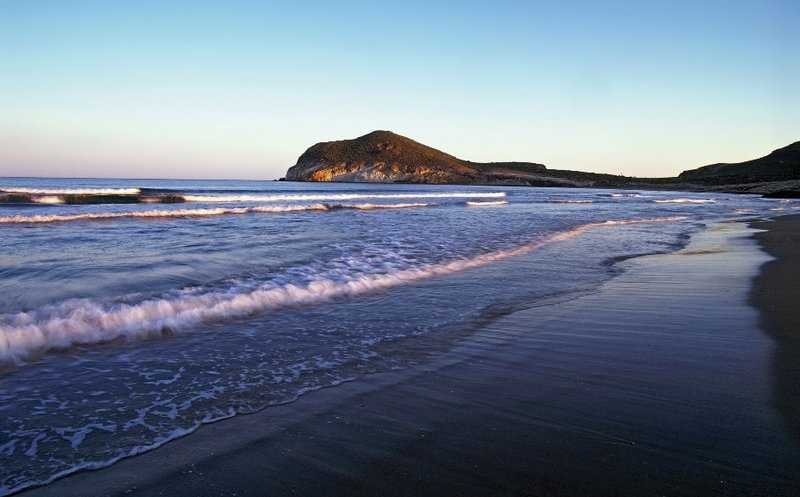
Cabo de Gata-Níjar Routes. From the desert to the coves

Walk 1. Alcazaba, cathedral and port of Almería - Cabo de Gata Salt Flats - Cabo de Gata Promontory.
Walk 2. Beach and Morrón de los Genoveses - San José - El Pozo de los Frailes - Los Escullos - Los Toros Cove.
Walk 3. Níjar- Cortijo del Fraile - Rodalquilar - Mining village - Las Negras - San Pedro Cove - El Plomo Cove - Enmedio Cove - Agua Amarga - Los Muertos Beach.
For those seeking new emotions, there are night-time tours, one of which is the Full Moon Route, which goes from Las Negras to El Playazo. The route is done in total darkness, which allows you to see all the constellations clearly as if you were in the desert.
The other is the Geological Route. It starts out from El Hoyazo in Níjar, it goes down to the coral reefs of the Cuervo Cove as far as the mines and the museum of Rodalquilar.



